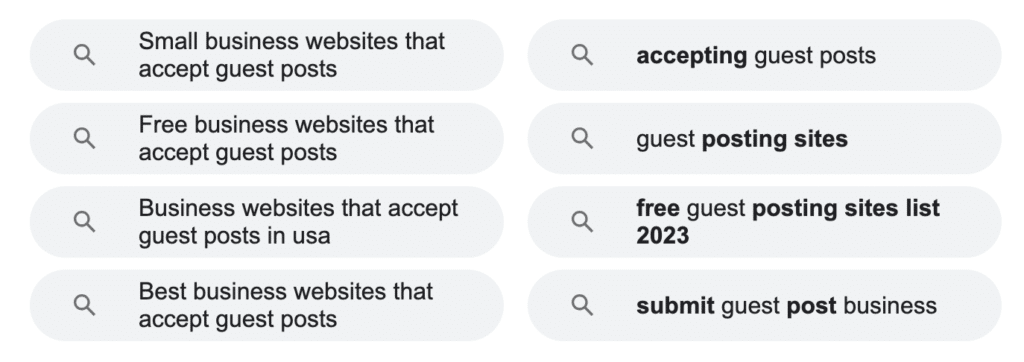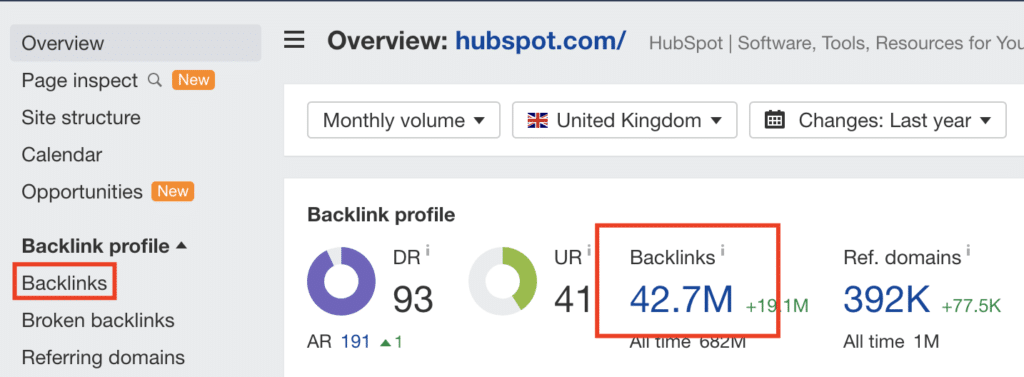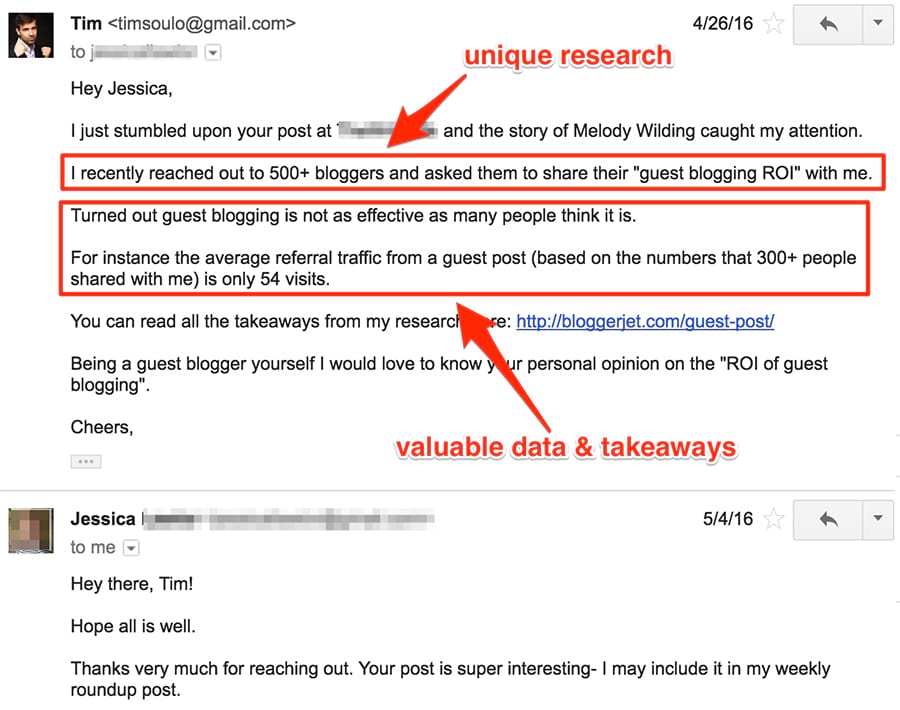Let me tell you something, I had the best results from my outreach campaigns when I didn’t have a clue what I was doing. Honestly.
Okay, I need to elaborate on this a bit more.
Warning: The intro part is quite long, but if you get my point here, you won’t need to read the whole article.
When I first started my career in marketing, I was involved in selling advertising space in one (paper) magazine. When a digital agency decided to give me a chance to join their SEO/outreach team I was quite surprised. They’ve explained that it was due to my previous experience?? I had no idea what SEO is, and link building to me sounded like a term in Mandarin. Again, I didn’t have the slightest idea why they chose me, nor how to do outreach. The target was to get four links in a month.
However, after the onboarding session I’ve figured out that I basically need to sell guest posts to websites (for a backlink).
And I did. However, I hit my target in three days! Yes, without any previous experience. And yes, I am not being modest here.
The TL; DR
(Key points)
Here’s what I did:
- I searched for relevant opportunities. When I say relevant, I mean I’ve reached out to websites that really could benefit from what I was offering them. I’ve scanned every website manually and taught oh look, here’s an article that is a good addition to the one I have to offer, or okay, these guys have a nice website but they lack in content, etc.
- I found personal emails (or social media profiles). Like I organized in-person meetings to offer the magazine’s advertising space, I figured out that I need to knock on the right (online) door. At that time I wasn’t familiar with email-finders so if I could’t find an appropriate email, I decided to take my chance by pitching on social media.
- I didn’t use email templates. Just because I didn’t know they existed :). I had a couple of sentences that I’ve copy-pasted, but all in all, I’ve customized each message. By that, I mean that I’ve explained in detail what I considered being a benefit of accepting the post I am offering. I’ve also tried to use an appropriate tone, to add some personalization, etc. Just as I would talk to a person in a meeting.
- I followed up with a good reason, but I didn’t spam. I haven’t just sent a typical just-checking-if-you-got my-email message, but sent a different post topic suggestion, some win-win suggestion (I’ll share your business from a 500k followers Twitter account), mentioned the sender on social media, or at least did the basic follow up, but with some eye-catching subject line.
You see, basically, everything I did was just based on my previous sales experience…but most of all — based on common sense.
Nobody wants spam. Nobody reads email templates. Nobody will give you a link without getting some value in return.
Now that you made it till here, let me share some practical stuff that I’ve learned during the years.
(I promise, no more chit-chatty stuff!)
Disclaimer: I will recommend some tools and articles, but none are sponsored, or affiliated.
What does it mean to do outreach (in marketing)?
Outreach is a part of a marketing, or a sales strategy where you reach out to relevant people to pitch them your product, to ask for a backlink or a mention on social media to let them know that we published a new piece of content …or just to make a connection. |
How to do a successful outreach?
1.Find relevant prospects
2.Divide your list into different groups
3.Find the right email address
4.Tailor the outreach message to each group
5.Follow up (…and again)
1.Find relevant prospects
Depending on what is the purpose of your outreach campaign you should figure out a relevant way to find your prospects. I’ll share some tips that you can adjust a bit for your outreach campaigns.
….if you need websites:
Let’s say you are doing link building for a B2B.
If you don’t already have, for example, a list of websites that accept guest posts, you can always start by asking Google. Just type something like business websites that accept guest posts, business website+submit post, business website+write for us, business website+submit article…
You’ll also get a bunch of other suggestions to try out:

The next thing you can do is to check what backlinks your competitors have already gained and therefore get some ideas where to shoot.
Tools to help you out: Tools I use to check competitor’s backlinks are Ahrefs’ Site Explorer ,SEMRush Backlinks Checker, and Moz’s Link Explorer.
Ahrefs should have the largest backlink index available (12 trillion links!!!) updated every 15 minutes, so I’ll use it as an example here.
Just type the name of the website you want to check and head to the Backlinks section.

You’ll get an extensive list that you can filter and export.
I like the tool since it shows not only the URLs of competitor’s backlinks, but gives additional info: how strong is the domain (DR, UR), the linked domains, traffic, keywords…All of these info are pretty useful to narrow down your list.
The guys from Ahrefs even provided you with a neat Google Sheet (don’t ask for access, just copy it) that you can use to analyze the backlinks.
Find out more: Here’s a more in depth article on how to analyze your competitors’ backlinks with Ahrefs.
One other way to find relevant websites to outreach to is to use SimilarSites. SimilarSites is an extension that will provide you with a list of websites similar to the one you used as a benchmark.
It is always a good idea to join relevant guest posting communities on Facebook, Slack, Discord…
After you get your first guest posts, you will probably get tons of emails with some paid guest posting opportunities. Honestly, the majority of the ones I get are either too expensive, or not relevant at all, but I try to reach out personally to the listed websites and ask for a win-win collab.
Important: Be careful with link building, Google’s algorithm is very smart and you can easily get penalized for any spammy link. Here’s an article that will guide you through the do’s and don’ts: Google Warning on Guest Posting For Links.
….if you need influencers:
FYI: Influencers are usually active on Instagram and TikTok, so my tips would be based on these two platforms.
The first thing you should explore to find influencers in your niche is to explore relevant hashtags. Influencers love them, and you’ll probably manage to find plenty of big sharks, but also micro influencers.
A Google search is always a good idea. However, you’ll want to add, for example, instagram.com to your search query:

You can also use search engines to find blogs and personal websites. Most of them will have social links in the header or footer, so you can find the profiles. Besides, I find it easier to reach out via email (that you can find on the website) rather than through social media platforms.
Spying on your competitors is also a great starting point. However, you’ll need to do it manually.
On a competitor’s profile, check the photos that someone has tagged them in. Scan if there are any influencers among these posts. Also, make sure you follow your competitors so that the algorithm can recognize you as a target and surely it will serve you a bunch of relevant ads. Believe me.
Of course, there are also a bunch of tools to help you find influencers for your brand. I mean, a simple Google search can also do the trick!
The tools differ depending on the database they have. Same goes for the pricing. I suggest that you start by checking the free tools first.
Tools to help you out: Here’s an article with 21 FREE Influencer Marketing Tools to Find Influencers with a short explanation of what you can use each tool for.
One useful thing to do is to have brand ambassador guidelines on your website, in case an influencer stumbles upon your website (…through any of your marketing channels). That way, you’ll know that you are open to collaborations, what do you offer in exchange, etc. Here’s a great example.

Tools to help you out: Set alerts for your competitors’ mentions. That way you can get a bunch of ideas. Check out Mention, BrandMentions, Brand 24.
2. Divide your list into different groups
It’s just disrespectful to mass-email top people in your niche with some generic “outreach template.”, explained Tim Soulo from Ahrefs, and I totally agree with him.
The chances that you’ll get an answer with mass-templates are really low. The chance that somebody will report your email as spam is huge.
These are just some of the reasons why you should divide your list of prospects into several groups and tailor the way you’ll reach out.
Think of them as:
- VIPs
- Big players
- Rising stars
- Newcomers
Here’re some suggestions on how to approach each one of them.
- VIPs
Depending on the industry, the VIPs are different. However, you can always consider them as ones that have a great audience and/or community. They probably had some great achievements, or they’re simply famous. Anyhow, it is pretty hard to get them to open your email/message…and the odds are that someone else is doing it for them.
Some examples of VIPs can be: Garry Vainerchuk, Kylie Jenner, Simon Sinek…,or websites like Forbes, Entrepreneur,…influencers like Chiara Ferragni, etc.
However, if you somehow manage to get their attention, the perks are numerous, so give it a try!
Don’t just send an email. Try to comment on their posts/pics on social media for a while, just to get their attention. Ideally would be to get connected through a friend of a friend, or on some event.
Don’t get discouraged if you don’t get any replies even after all of your efforts. Shift your focus to other groups, and get back to VIPs from time to time.
- Big players
Big players are not that famous as VIPs, but not that unreachable, as well. They may not have millions of followers, but their audience is still huge enough to get you numerous exposure.
They are usually influencers with 100+ thousand followers, websites that have 100+ thousand monthly visits, etc. Some examples would be Nathan Berry, Tamara Kalinic, TheNextWeb, etc.
It goes without saying that these guys won’t reply to an obvious template. However, if you send a nice, customized message via the channel they are most active on, there’s a good chance that they will reply.
If they do, they are probably interested so you might get what you’ve asked for, but even if you don’t make sure you still stay in touch until the next opportunity.
- Rising stars
Now, this group is a perfect target audience. You have nice chances not only to get a reply, but to establish a collaboration.
Since they still don’t have a big audience, they would most likely join forces to attract new audiences. That’s why you can be creative when suggesting collaborations: guest posting, giveaways, cross promotions, events, etc.
Still, you don’t want to reach out with templates, especially because you should have customized ideas. Or, divide this group into several smaller ones (one for guest posting, one for organizing a giveaway, one for a cross-promotion on social media…), and then it is fine to send a template to each one of them.
- Newcomers
This group is not your ideal audience since they probably don’t have that much followers/website visits. However, why don’t give it a try and perhaps you can get some traction. I rarely advise to skip any opportunities, but I often advise to work smart.
That’s why it is completely legit to send a template to this group.
Ok, let’s get to the part where you’ll get this kind of reply 🙂 :

3.Find the right email address
Reaching out via email is a no brainer. And it is completely fine, as long as you reach out to the right person, and find the right email address.
However, sometimes social media can be a better option. It all depends on the preferences of the person you are trying to reach. For example, I often see that Instagram influencers put their email address in the bio section. I suppose that they’ll ignore DMs…I mean, there’s a reason why they’ve written their email, right?
The best thing to do (if appropriate) is to initiate the communication via social media comments, shares…just to grab the attention of the person, and to reach out later via email.
Okay, back to the email communication. After all, it is the most common way you’ll do outreach anyway.
As I mentioned, first things first — make sure you are talking to the right person. For example, if you are seeking for a guest post opportunity you’ll want to find the editor’s contact. Or, if you are doing cold sales outreach, shoot at somebody from the top management. If you want a story coverage, don’t just pitch to the info@domain.com, yet try to find the journalist that covered similar stories to yours.
I am sure you got my point here.
Okay, so — how to find relevant email addresses?
It might seem like a no-brainer, but people often overlook checking if a person’s email is publicly available on the website. You won’t believe how many times a certain tool just can’t scrape info that you can find on a Contact page, a Facebook profile, etc. It is because sometimes the email is written for example, like : hello (at) anakaric (dot) com.
If you can’t seem to find a person’s email that easy, then the next step is to try some email discovery tools. Most of them offer free trials, but if you are doing outreach on a regular basis, then investing in a subscription is a good idea.
Tools to help you out: I’ve listed below some email finders I can recommend. Please note that you can’t rely 100% on the info they provide you with. Some of them scrape info from websites, some of them from LinkedIn, so I suggest combining the results.
Email lookup tools:
- Hunter
- Snov.io
- Find That Email
- Name2Email (Chrome extension)
- Reply.io’s Chrome extension (scrapes from LinkedIn)
- FindThatLead
- Name2Email
- ZeroIn
- Apollo (Chrome extension)
- Voila Norbert
Believe it or not, but you can find plenty of relevant email addresses…simply by guessing them! If you know the first name, last name and the domain of the person you want to contact, you can try some of these email address formats:
First name@domain.com
First name + last name@domain.com
First name.last name@domain.com
First letter of the first name + last name@domain.com
First name + the first letter of the last name@domain.com
Initials@domain.com (this is rarely the case)
Tools to help you out: Email Permutator Tool, MailMeteor, Metricsparrow or the Email Permutator Google sheet will automatically generate a list of possible email addresses, so you can at least skip the manual guesswork.
If none of these help, you can always send a nice email to a generic email address and ask to get connected with the person you want to reach (a simple email, with no additional explanation works like a charm!). Ah, yes — make sure you reach out from a business email address, and that you have a proper signature so you don’t seem like a spammer.
Important: Before you start sending emails, I recommend not to skip the following steps. I know that they might seem as an unnecessary hassle, but if you get known as a spammer, you can say goodbye to your outreach campaigns. Besides, you can easily get your email and even the whole domain banned.
4.Tailor the outreach message to each group
Before you start crafting any outreach message, think twice about what’s your offer. Is it really that valuable for your prospect?
If you want something from the person you are reaching out to, make sure that there’s something (really) valuable you offer in return.
As stated several times above, you need to have a customized approach. It all depends on what you are offering, to whom, and what do you want in return.
You may think that, for example, the article you wrote is really informative and outstanding…but double check if there’s anything similar already published. VIPs and Big players are especially hard to impress.
Good to know: Statistics, research, round-ups, and reports are often a good hook for getting links and mentions.
Once you figure out what makes your offer unique, write down a message that will highlight the value you offer. For example, it’s a good idea to add a takeaway from your content. Just as a kind of a hint.
Try not even to ask for anything in particular, but wait for the recipient to make a suggestion…it worked for me a couple of times!
Okay, my next tip/hack is something you need to put a bit more effort in, but it is really worth it.
Feature your prospect in an article, social media post…and just send them a polite email to let them know. But, that email actually means: Hey, I’ve mentioned you for free, now it’s your turn to do me a favor.

You see, I haven’t asked for anything in particular, actually I’ve just made the initial contact and very often it ended up with very nice collabs.

One other thing you should do is to show your prospects that you know them. Try to find out if your target has visited any conferences, places near you (…or a place you’ve also visited recently), or even restaurants and coffee shops. Or, perhaps you can see that your prospect is binging a new Netflix series. That’s perfect info to put in the subject line!
Everybody will appreciate seeing that you put some effort before reaching out. Even the VIPs.
No matter who you reach out to (VIPs, Big players, Rising stars, or Newcomers), note this:
Show off just your best work, make it relevant to the recipient, ask for something that makes sense (or, don’t ask for anything at all), and add as much personalization as possible.
And, AVOID OUTREACH TEMPLATES (that are obviously templates).
Yes, you can craft several general templates for each group you reach out to, but customize them as much as you can.
I must share another great example the guys from Ahrefs wrote, it’s one of the outreach templates they are using. You see, it doesn’t seem generic at all.

There are various tools built especially for the purpose of creating and sending personalized outreached campaigns.
Why use outreach tools?
- You can send mass emails without getting blocked
- A good tool will ensure that your email is sent to the Inbox folder (not Spam, Promotions, etc.)
- There are plenty of personalization options
- You can automate the campaigns (send follow ups just to people who didn’t respond)
- Some tools enable multichannel campaigns (email, SMS, WhatsApp, etc.
Tools to help you out: Reply.io is my favorite, but you can try Klenty, Woodpecker, , Buzzstream, Salesloft.
5.Follow up (…and again)
People forget to respond to messages, or they overlook them for numerous reasons. And it is quite normal. That’s why a simple follow up can be very effective. As long as it is not spammy.
Something like this works for me:
You can make it even shorter.
Helpful: Here’re 9 follow up examples that guys from Lemlist crafted, worth checking out.
As for my advice on how many times to follow up, I personally suggest just twice. And that’s it. You’ll find in many sales related articles that they say follow up until you don’t get a reply, but I don’t like being a spammer. And honestly, I rarely got a positive reply after the second follow up.
Did you get my point?
Hope my advice here were useful to level up your outreach game
Remember, there’s a human on the other side of the screen, so make sure he gets the needed respect. Literally, it is just common sense, as I’ve mentioned at the beginning of the article.
Revisit a section:
1.Find relevant prospects
2.Divide your list into different groups
3.Find the right email address
4.Tailor the outreach message to each group
5.Follow up (…and again)



